Review for Gosick: Collection 1
Introduction
2011 was a great year for anime. The number of shows that I watched online through sites like Crunchyroll and Anime on Demand was greater than ever before, and surprisingly, the quality of these shows was stupendously high, both in terms of animation, and in terms of content. I went weak at the knees for shows like Usagi Drop, Un-go, Stein’s;Gate, Nichijou, and Hanasaku Iroha...
2011 was a poor year for anime. The number of shows that I watched online and liked, and that didn’t get quick licenses is pretty much equal. It’s only the existence of the Australian anime market that has offered some glimmer of hope, as companies like Madman and Siren Visual has started licensing shows that fail to get quick US pickups. I had Usagi Drop on order from Siren before NIS had it announced for the US. Bandai Entertainment went and licensed a couple of very choice titles for the US, and then had the temerity to go out of business, and it’s only through Madman Entertainment that Nichijou will get an English language release, hopefully next year. And while shows like Un-go and Stein’s;Gate are now trickling out in the US, no one has at this point licensed Hanasaku Iroha. One of the shows that I watched on Crunchyroll and put on my must own list was Gosick. Gosick was the other show that Bandai licensed before going phut, but thankfully Madman Entertainment recognised its brilliance when they saw it. It’s only out in Australia, and it’s in subtitle form only, but I do now own Gosick.
Incidentally, you may be scratching your heads at another bizarre Japanese title for an anime, but when you realise that Gosick is the way that the Japanese pronounce ‘Gothic’ then you’ll realise that there can be no more appropriate title for this show.
Kazuya Kujo is a Japanese transfer student who’s been sent to study at the elite St. Marguerite Academy in the fictional European nation of Saubure in 1924. It’s a quaint country, rushing headlong into the modern age, yet still infused with myths, legends and superstitions. Kujo’s dark hair and foreign appearance get him dubbed the Dark Reaper, and he’s isolated by his classmates. His teacher Miss Cecile suggests that he should read more ghost stories, to try and fit in. That takes him to the school’s library tower, where on the top floor lives another superstitious figure and eternal absentee from class. Victorique is a diminutive, blonde haired-girl, by turns dubbed the Golden Fairy and the Gray Wolf, who shies away from human contact. But for some reason she takes to Kujo. She loves puzzles, can solve crimes that baffle the local police force, and she soon relies on Kujo to bring her increasingly baffling mysteries to which she can devote her logical mind, while Kujo’s run ragged to help stave off her boredom. But the mysteries that she solves are nothing compares to the mysteries that surround Victorique herself.
The first twelve episodes of Gosick are presented across two discs by Madman Entertainment.
Disc 1
01. The Dark Reaper Finds the Golden Fairy
02. The Souls of the Dead Raise a Shipwreck
03. The Hares Break a Promise Under the Morning Sun
04. The Golden Thread Cuts Through a Passing Moment
05. There’s a Mysterious Ghost in the Abandoned Storehouse
06. The Gray Wolf Summons a Compatriot
Disc 2
07. A Divine Revelation is Given at the Summer Solstice Festival
08. Howling Echoes From the Kingdom of the Past
09. Blue Roses Bloom in the Cannibal Department Store
10. Girl With a Cold Dreams of Her Stubborn Friend
11. The Drill Eloquently Speaks of Love
12. The Voices of Cicadas Are Heard on Summer Afternoons
Picture
Gosick gets a 1.78:1 anamorphic transfer, which Madman have given the native PAL treatment. It’s a crystal clear presentation, sharp and with consistent colours throughout, and with smooth animation. It’s just what this Studio Bones show deserves, with its really high production values and strong attention to detail. The character designs are typical anime, but unique and memorable in their own right, while the colour palette is rich and subdued, lavish enough to do justice to the complex and detailed visuals, while still harking of the period, almost with sepia overtones.
Sound
The sole audio track is a DD 2.0 Japanese stereo track with optional English subtitles. The dialogue is clear throughout, while the stereo when given a little Prologic push expands quite well to give the show presence, bringing across the ambience and the action sequences quite well. The music too is of high quality, an orchestral soundtrack that once again enhances the shows dramatic texture without overwhelming the narrative. The subtitles are accurately timed and free of error, although there are no subtitles for the opening and end themes. The only nitpick is a poorly placed layer change in disc 2, right in the middle of a music cue.
I’ve got this pet theory, that the best shows get the best theme songs (although that falls apart when it comes to Ikki Tousen), the first end theme to Gosick, Resucitated Hope by Lisa Komine, is so appropriate to the show that they seem created for each other, and it’s a great song as well.
Extras
2 discs come in an Amaray case, with one disc on a central hinged panel. The inside of the sleeve unfolds into a mini poster featuring character art.
For some bizarre reason, the Aniplex logo shows up when you put the discs into the player, even though it’s a Studio Bones show distributed by Kadokawa. Both discs have static menus, and jacket pictures when the discs aren’t spinning in compatible players.
The only extras are on disc 2, and amount to the textless credit sequences, and some promotional videos. There’s about five minutes worth of the latter, all in Japanese, and all lacking subtitles.
You’ll also find trailers for other Madman discs, including Rozen Maiden Ouverture, Squid Girl, Le Portrait de Petite Cossette, and Puella Magi Madoka Magica.
Conclusion
It’s an inevitable result of watching so much anime, but in recent reviews I’ve been mentioning more and more how anime seems to be made to order, to fulfil a committee’s requirements, and to cater for a very select demographic, almost to a point where the creators tick boxes on a checklist, making sure as many familiar elements, clichés, and tropes are included in a show, before they even get to actually crafting a story. I’ve made it my aim in my appreciation of anime to seek out the shows that think outside this box, and instead offer something new and unexpected. Gosick isn’t one of these shows. Instead it’s something better. It’s a show that ticks the boxes on that checklist, it’s a detective show, it’s got a tsundere female character, and it’s got a hapless teen doormat of a male, all anime stereotypes that the target demographic can feel comfortable with, but what it does with these elements, the story that it fashions around them, transcends that, and winds up delivering a show that ranks among the best anime in recent years. Gosick is brilliant!
Gosick’s production values and especially the quality of the writing mark it out as something really special. It’s had the thought, care, and more importantly the budget applied to it that allows it to shine. The first thing is that the show’s setting is so evocative. It takes place in a fictional European country in between the war years, a period that was a marvel for design and creativity in the arts, which is also reflected in the artwork of the show. Saubure is something of a regional power, and you have a whole lot of political tension going on in the background. There’s a sense of relief following the Great War, but the still present friction between nations has a sense of foreboding about it. The St Marguerite’s Academy is a school for the elite of the world, the scions of the rich and the powerful attend, and that cosmopolitan feel really enhances the narrative. Also, that period in history was a collision of past and present, tradition and modernity, with the advent of technology, and in Saubure that’s also represented by a national obsession with myths and superstitions that stands in contrast with a nation racing towards the modern age.
Kazuya Kujo is the hapless teen male, the intended doormat of the show’s tsundere character, but here he gets a background that explains his inferiority complex. He’s the third son in his family, and there’s no place for him when it comes to inheritance, or when it comes to service to his nation. Add to that a coddled upbringing from his mother, abject criticism from his father, and being looked down upon by his brothers. He’s in the position of being simultaneously left to find his own path, while still having to live up to expectations. It’s no wonder that he escapes to Europe, to get a sophisticated schooling, and hopefully some direction in his life. That he comes to superstitious Saubure at the right time to be marked as ill-omened doesn’t help, as he winds up isolated in his class anyway. It seems destined that he winds up with the other ostracised member of the class, but it’s when he visits the library and meets Victorique that he realises that being the Black Reaper is nothing as bad as being dubbed the Gray Wolf.
Victorique is the nominal tsundere in the cast. A tsundere is a female with an abrasive and hard outer personality, but with an inner warmth and tenderness that can be revealed by the right male. But once again, Gosick provides a background to Victorique that makes her personality mean something beyond just catering to an anime fan demographic. When we meet her, she doesn’t attend class, she’s just isolated atop the library tower, trying to fend off eternal boredom by immersing herself in books. As the series progresses, we begin to learn the reasons why, but the result is that she’s never really had any human contact, and her confinement in the tower is little more than a gilded cage. The first moment that Kujo lays eyes on her, he mistakes her for a porcelain doll, petite of stature and dressed in gothic style, and from that moment he becomes fascinated with her, despite getting to know her.
For Victorique has little experience with people, and Kujo is the first person she’s really had any interaction with, so she’s selfish, opinionated, unthinking and lacks empathy in dealing with him. She’s demanding and arrogant, and Kujo with his inferiority complex and fascination with her is the perfect doormat to cater to her whims. That fascination is justified, as while Victorique’s emotional development is somewhat stunted, she has a keen intellect, a razor sharp mind, as becomes apparent when a lift on the top floor of the library tower disgorges police detective Grevil de Blois, a dandy of a man with a ridiculous haircut who comes to Victorique for advice in solving crimes. Except that he isn’t too happy in asking her, and seeing Kujo there uses him as an intermediary, which is how Kujo first gets involved in the various crimes and mysteries that Victorique is asked to solve, and which to his annoyance Grevil takes credit for.
Soon Victorique is demanding that Kujo bring her ever more complex mysteries, and when they get permission, she gets to go with him outside the school as well. Another aspect of Victorique’s personality is revealed as she begins to experience the world for the first time, and approaches it with a sense of childlike wonder, hastily concealed behind a prideful disdain, especially when seeing things through Kujo’s eyes. The thing about these mysteries is that they are very well constructed and genuinely baffling, making it a joy to watch Victorique and Kujo go about investigating and solving them. Most of these are multi-episode arcs, beginning with a locked room murder mystery leading to a fateful meeting on a ship, then Kujo himself is framed for murder, and there’s also a smuggling racket investigated in the capital Saubreme. Of the most interest to the overall story is the arc where Victorique sneaks out in the middle of the night and journeys to a mountain village, the source of the Gray Wolf legends, and it turns out that she’s going there to prove her absent mother’s innocence of a long ago murder.
While all this is going on, there are plenty of seeds being sown for the overall story, with more and more revelations about Victorique’s past, and where she fits in the ruling family of Saubure, as well as her relationship to Grevil. Her mother, Cordelia Gallo does make an appearance during these episodes, and also there’s the appearance of a mysterious man, Brian Roscoe that obviously has an ongoing importance. This collection of episodes ends on a light note, with one episode devoted to Grevil and his lost love, also explaining the reason behind his hairstyle. The final episode is a pure piece of whimsy devoted to Kujo and Victorique, who wind up spending summer together in the school while everyone else goes on vacation.
Gosick is a great period drama, a quality detective story, with equal moments of lightness and dark. It’s written brilliantly, and you’ll be glued to every frame, but above all it’s a love story. It’s about how Kujo’s fascination for Victorique gradually turns to affection, and how Victorique’s reliance on her erstwhile servant grows deeper. Gosick excels in subtlety here, the animation is good enough to convey a wealth of emotion through a softening of expression, or a quick glance, while the two form a relationship of capricious whims on Victorique’s part, and teasing subservience on Kujo’s. For an anime to develop an emotional relationship practically all in the subtext is rare to the point of unique.
All of which bizarrely makes me want to mark this collection of episodes low. The benefit of watching on Crunchyroll beforehand means that I know just how good the second half of Gosick is, and I feel it’s many times better than the first half. But taken by itself, this first half of the show is one of the best anime I have seen. Don’t wait for a license or a dub, watch it on Crunchyroll for yourself and be convinced, then place an order for the Australian release. Frankly I’d pay that money just to hear Victorique sneeze.
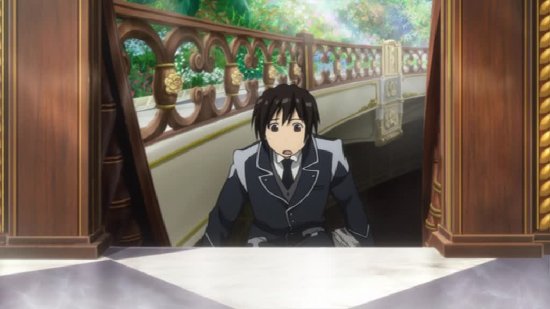
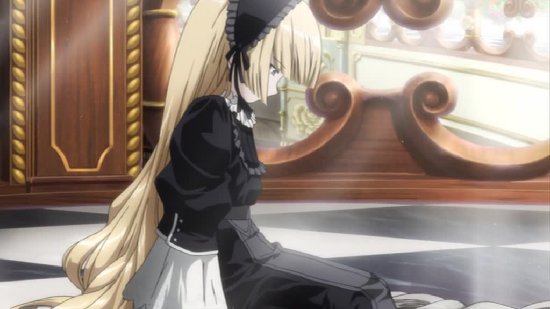

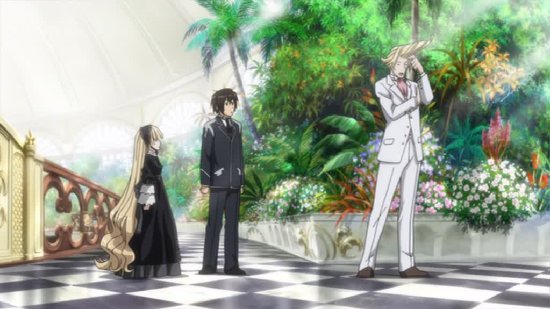
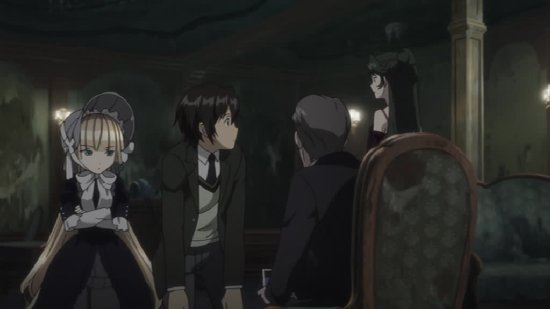
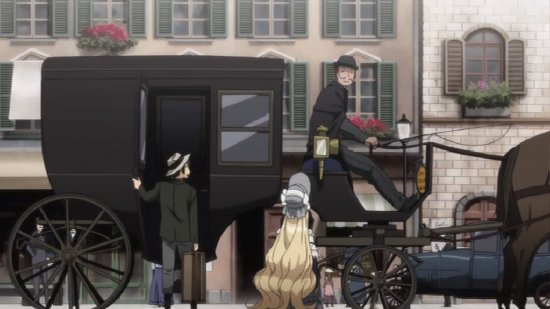
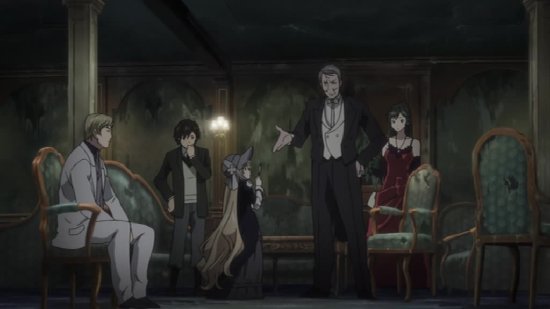

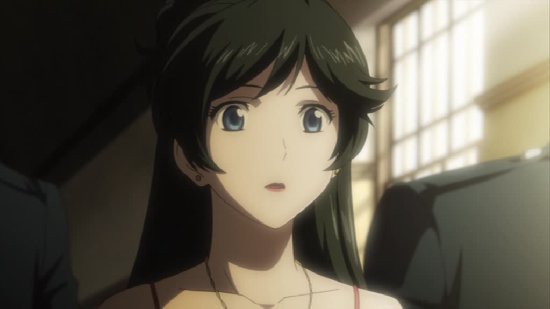
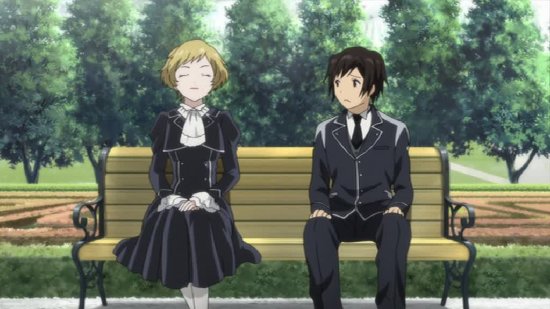
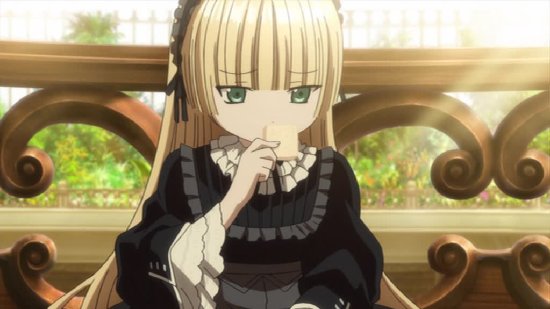
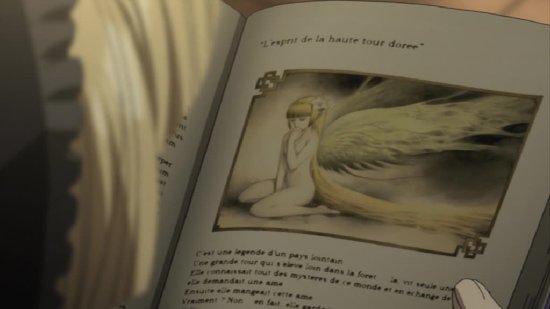
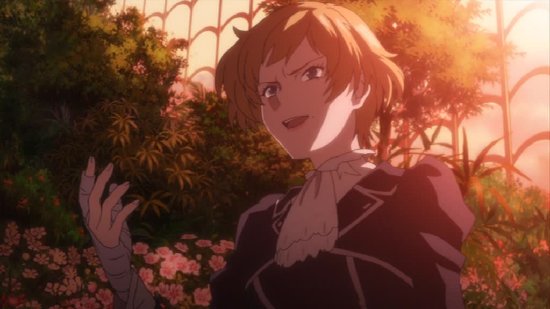
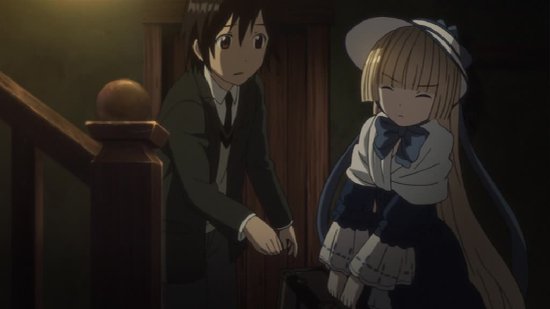
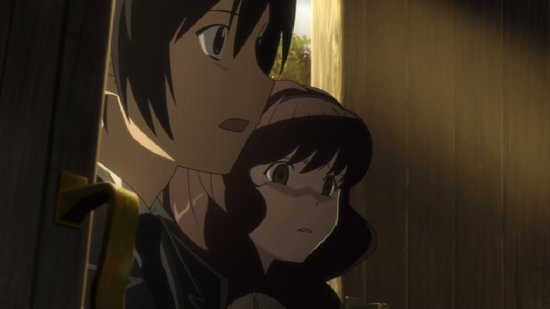
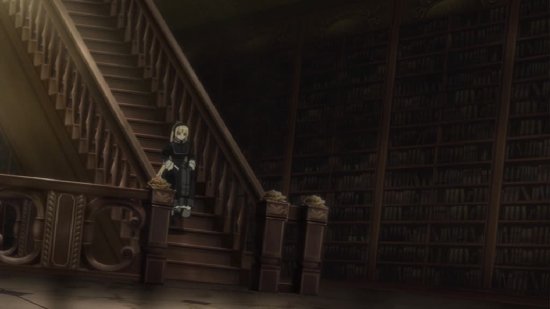
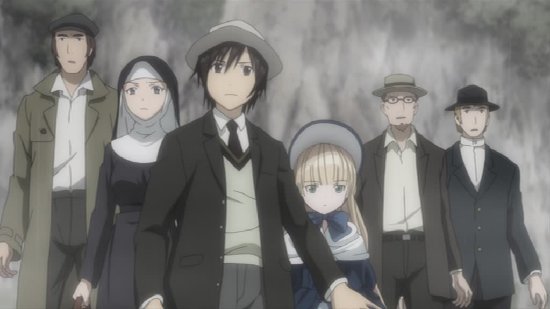
Your Opinions and Comments
Be the first to post a comment!